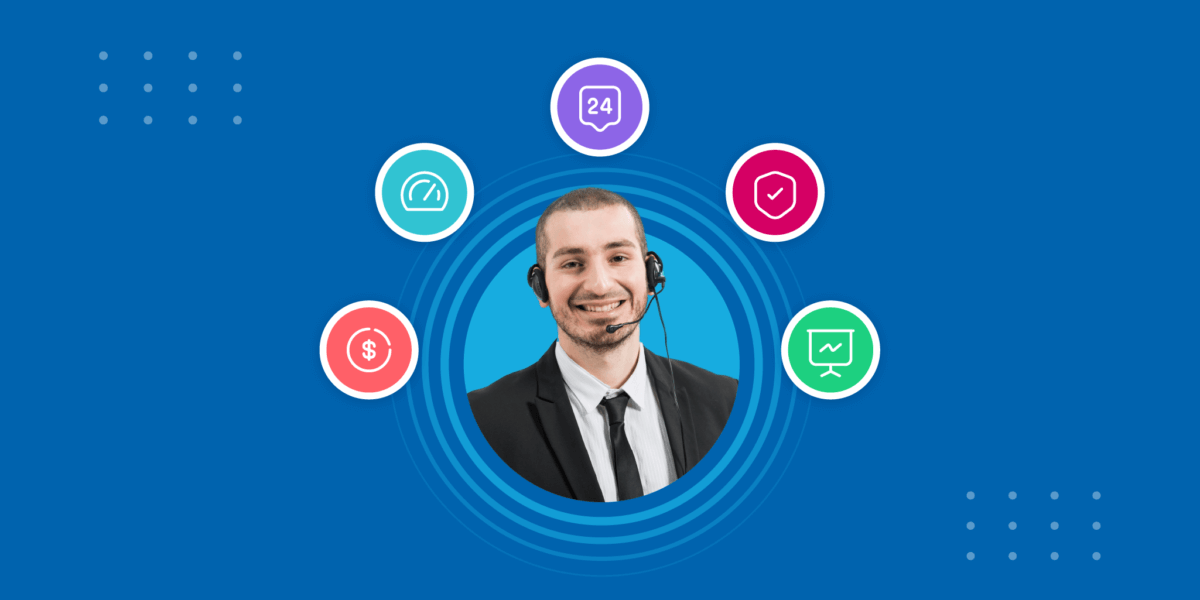The Importance of Customer Support in Early Stage Startup

The Importance of Customer Support in Early Stage Startup
Siraj Uddin is Head of Customer Experience at Transak. He talks about the importance of customer support in early-stage startups and how he scales support.
Customer support in an early-stage startup isn’t easy. And who would know it better than Siraj Uddin?
As one of our guests on The Twenty Minute Moat, we talk to Siraj Uddin. Siraj has built and led customer support teams at some of India’s most valuable companies, like Flipkart, Paytm and Blackbuck.
Siraj now heads customer experience at Transak, an early stage crypto payment gateway based out of London.
In the podcast episode, Anush talked to Siraj about:
- The importance of customer support in early-stage startups.
- How he built support for the Indian masses?
- And how COVID-19 affected how he perceives the industry?
If you’ve ever wondered what early-stage startups need and what is customer support for startups, this is the episode for you.
We’ve slightly edited the transcript for easy reading. If you’d like to listen to the podcast instead, here is the link for you.
Anush: Can you start off by introducing yourself, telling us where you work and what you do for them?
Siraj: So, currently, I’m working with Transak as Director of Customer Support and Operations.
My role probably at Transak is making sure that our customers have the right experience. Right from onboarding to anytime there is an issue; the customer can reach out to the team, and the team reaches out to me.
Anush: Can you tell us more about Transak? Can you describe Transak as a company to someone who's maybe not heard of it before?
Siraj: You can look at Transak as an early stage Razorpay. Like in India, we have Razorpay, the payment gateway provider. So basically, this is a payment gateway provider for the crypto world and cryptocurrency.
You know, if you want to buy Cryptocurrency, this would be somebody who is moving your Fiat currency, like USD or GBP. We’re supporting like 29 different countries. So any fiat currency that you have and want to use to buy cryptocurrency, you can come to our platform.
If you are a business that is trying to onboard customers who do stuff on your D5 applications, you can use our payment gateway to onboard this customer. They can pay in fiat, and they can receive crypto, or they can, sell their crypto and get money back in their fiat. So we are like a bridge between fiat and the crypto world.
Anush: So, you sort of join Transak when it's a fairly early-stage startup like you mentioned. You are the Director of Customer Support and Operations. So, this early on, what kind of processes are you trying to set in place? What kind of tickets do you receive, and how do you resolve them?
Siraj:
I think for an early-stage startup, it is absolutely important that you have good customer support. Because your early adopters are the biggest asset that we can have as a company.
These are the people who are trusting you when you are nothing. And if you have to make sure that when they’re trusting you, you also have a strong process and customer support. You kind of help them out when they have any questions. And they usually have some problem, especially when you are an early-stage startup.
You have very limited resources around engineering or any other field, right? So, it’s absolutely important that you have human beings there, not really just the bot, answering to customers.
And especially when you talk about cryptocurrency and everything. There’s a large issue with trust. Transak is one of the very few companies where we are making sure that we have human beings 24×7 to answer our customers, right?
Customers are trusting us with their money. And we want to make sure if they have any questions or anything that has gone wrong for XYZ reason, there is somebody to answer them, right?
And I think by far, at Transak, we have not done any kind of marketing campaigns or anything like that. The volume that we are getting is purely, purely organic right now.
Every single day customers are telling us that they love our product. They love the service that we are giving, the customer support is amazing, and I think this is what we live for, right? And this gives us a good foundation.
Anush: This obviously seems like a billion-dollar opportunity waiting to happen. And you would have some experience with this, because the last company you worked for, which is Blackbuck, was in fact a billion-dollar company. Before we start off, right, can you give me a brief thing about what Blackbuck is and what Blackbuck does or did?
Siraj: So basically, what Blackbuck does is anything and everything around trucking. I was part of a team that used to provide services around trucking, like your Fastag, your GPS, your fuel, even your insurance and everything for the truck. So, they are solving real problems in the market, and I was lucky to be part of the organisation.
Anush: So, can you talk to me about, like, sort of, (a) the kind of tickets that you saw being raised, and how they were different from what you get at Transak? And (b), to a lesser extent, all of the challenges you faced as a customer support team with Blackbuck.
Siraj: The customer base at Blackbuck is really very different from the customers that, you know, maybe I was dealing with, at Paytm or probably at Flipkart.
The customer base at blackbuck was a customer from a tier 2 or a tier 3 city. Wherein, the customer tickets used to be more around, how do I do this? How do I do that? Where do I find this? Where do I find that?
During the initial phase, when I joined the company, we started creating a voice for customer. And started looking at the kind of contexts that we were getting.
And we realised that a lot of these contexts were basically just educational. We just have to kind of educate a customer, and most of these features were already available on our app.
It is just that they do not know where to go and find those. So we started creating video tutorials and, on the app, some of the self-serve models.
When they’re trying to raise the complaint, we often show them some videos that they know that, ok, this is what (it is), if I do this, then my issues get resolved.
You cannot have everything in English; you need to have regional languages and other things. So we built those features onto the app. I think it was very different.
When I joined the company, then the COO of the company, Abhishek Verma, told me that Siraj, I understand you come from this companies, and I need to understand customer base is different here. I need to think very differently and make sure that you are building customer support for rural India. And, I think that one thought process kind of changed my thinking and, trust me, it has been an amazing journey there.
We started with the CSAT of like 53%. And, as I was leaving the company, I think we moved to a 75% CSAT. When I think, this is one of our best (progress), compare to like previously.
Anush: And to that, and I think you referred, you basically mentioned a couple of metrics you tracked? So, let's talk more about that in-depth. Talk to me about some of the metrics you track while you're at Transak, some of the metrics you tracked while you were at Blackbuck? The metrics that are necessarily not the same and the metrics that are, in fact, the same.
Siraj: I think, broadly, Anush, there are two major metrics that I drive.
One is like order to contact. This is a metric that can be related to your contact reduction. It can help you measure your cost, efficiency, revenue, the cost to the company, everything, like, you know, the mother metric. You can derive, like, every other possible metric in the organisation and tie it to the same, right?
The second metric that I drive across in the companies that I had been with, will be, of course, CSAT. You can have an internal quality team telling me the quality of your service is, like, in a 90%, 95% and all that, but maybe the customer does not feel the same way. You know, it’s important that the customer is telling you that you are 95%.
So, these are broadly like two metrics, if you really ask me, Anush. If we are able to do a great job in driving these two metrics, I think the rest of the sub-metric will be taken care of.
Anush: Sort of, in customer support, there are very rarely events that just completely change the way the industry works or the vertical works? COVID-19 was obviously one of those inflection points for customer support. Because, suddenly, you had a system where, depending on the company where you worked at, you either saw just a massive increase of tickets or a massive decrease of tickets, right? So, for example,if you had to go back to March 2020, where we went into full lockdown, right? I'm assuming trucking became sort of difficult to do, and people's challenges didn't necessarily disappear, but they sort of morphed into different aspects, right? Talk to me about some of the biggest challenges you faced, either professionally or personally, during 2020.
Siraj: I think this is possibly the toughest time of my career, right? Right from probably planning to set the team to work from home, to set expectations, not meant to end all the job insecurities that the team were going through, I think it was emotionally, a very tough time for me.
Some of the biggest challenges, obviously were, you know, like you mentioned, like, trucking took a huge, huge hit because of COVID, right? Our volumes, I think, tanked to, probably, zero, I would say in the first few months. We were not sure what is going to happen. It is a very uncertain time for all of us, right?
I think one of the biggest challenges for me was to let go of some of the best people that were there in my team, you know.
But what we did as a company, obviously, was to make sure that we reached out to the companies that were doing really well. Like, if you remember, the pharma companies and all these companies were doing really well, right?
And obviously, we reached out to them to make sure that, you know, our people got placed in those companies and, also, at the same time, I personally reached out to my peer group, right?
So, yeah, I think it was possibly the toughest time of my career, but I think we all learnt and grew from that yeah.
Anush: Talk to me about the biggest change that you saw as an industry veteran, come around in customer support over the pandemic?
Siraj: COVID has accelerated the entire digitisation and that, by I think, a few decades. What probably couldn’t happen in the last 10-20 years has happened probably in, just, you know, last few months.
I was talking to an Amazon delivery person here in my hometown, and I asked him what is the number of deliveries that you get per day? So he was saying it used to be like, 30 units a day. And he mentioned that during COVID, it went, like, 5X of that.
People started going online, and that too from a small town like where I am right now. And, the same thing has happened in the customer support industry.
People want to make sure that they’re able to pull more with less. And that being said, it is time people have started building solutions that could be, like, self serve bots and things like that, right?
Looking at, maybe, Amazon, they have always been ahead of time, right? If you look at Amazon’s Help Support Center and everything, you realise that they are possibly solving, I think 80% of the complaints on self-service itself.
And they have built it so nice and effortlessly, you can go there and, you know, get your issues sorted without even talking to a human being. You don’t feel like that you’re missing anything, and they have built it so well.
So, I think, a lot of these companies are learning, and, I think it’s time that people and companies have started adopting.
I think a data-driven approach to solving customer problems is going to be the future of customer support.
And the same thing we have done at Blackbuck. We started building, like, self serve FAQ models and videos and all this stuff during that time. And we have definitely seen a good amount of cost reduction and in our contact reduction and everything. And I think, yeah, that’s going to be the future.
Anush: Right, and to that end, what do you see more of and less of in customer support in 2021, for example?
Siraj: Chat as a channel, I see, people will be adopting more chat experiences, right? I think voice as a channel is dying slowly, is what I would say. With options that you can build on chat and self serve and everything.
If you ask me, am I comfortable picking up my phone and calling somebody? Not really. I don’t have time for all that. I’ll just ping somebody on my WhatsApp page. Then freedom is more important, you know, you want to be emotionally free.
And I think chat, like the self-serve bots and everything, are something which I see people will do more and more and use the data that they are receiving to be more proactive to solve the customer problems.
And this is something which I started when I was at Flipkart. Back in, like, 2015-16 types, right?
This is called proactive support. If you are a technology company, then you need to really identify where is the system breaking before even the customer gets to realise that there is something which went wrong, right?
We need to proactively solve that problem before even, you know, customer reaching out to you. I think that’s the future, right? You don’t want your customer to call you, and then you realise that there is a problem with the system.
You are a technology company, you should, by design, know what is breaking in the system and make proactive (efforts) to fix it. That’s the future.
I would say, this stupid IVR where you really have to go through, like, you know, 1,2,3,4 and then like this and that and all that stuff is something which is going to die very soon. There are still companies that do that, but I think that’s not a smart thing to do.
Anush: Right. To sort of move into the more open ballpark of questions, right, I think you mentioned Amazon as one of the companies, and this has consistently shown up in, like, multiple interviews that I have spoken to, everyone just so really, really like Amazon, because when you look at what they're doing, it is in fact just mind-boggling, right? To provide that kind of quality at that scale, right, really shows you the chops behind the people that are doing the work in the company. Talk to me about other companies that you think provide some great customer support. This could either be companies that you interact with on a day to day basis, or companies that you know professionally that do a great job.
Siraj: Yeah, I think Flipkart; I worked there. It’s not because I worked there. They have taken inspiration from Amazon, I would say. I have seen, like, you know, the structure there that they have; you need to have a dedicated customer success or the customer experience team, right?
You have a customer support team that does all this stuff, right? And then, you need to have a customer experience or a customer success team that is using this data in a large company like Flipkart or Amazon. They have this kind of setup, right. Or a Paytm, I did build that kind of a setup. Or at Blackbuck, we had a small team, you know.
Yeah, So what this team would typically do is take this entire data and information and everything available through customer support, use this and analyse this, do RCA and figure out what’s happening? Why are these contexts coming? Create a framework around that and then connect the organisation to build a solution based on the VOC, the Voice of the Customer, is saying.
And I think, in most of these companies, like in Amazon, as far as I know, I think they are mission-driven. If you see their mission is to be like the most customer-centric company in the world, right? They are driven by that mission.
And you see, a lot of companies have this, a fancy thing on their wall, saying we are customer 1st and we are customer-driven. And in reality, inside the board room, they are not really talking about the customer experience or customer support. They are just talking about revenue and money and all that, right?
So, you know, there are a few companies there, I think I have high regards for. One is obviously Cred. If you really see, now they are really, really invested in delivering that experience. And you can figure that out when you look at the app itself.
Anush: You’ve obviously been a veteran of this space, that you have worked here for several years, I think, close to a decade now in some capacity, right? What do you think are some of the most important lessons you learned about customer support? This could either be stuff that you've absorbed, while working or stuff that you want to tell people who sort of entering the industry that they should learn faster?
Siraj: Yeah, I think first of all, like you need to know that this is an industry that you can build a career in. And if you really see, people from IIT, IIMs and all that, they don’t want to get into customer support.
They think that, like OK, this is not for me. I want to do something bigger than this. But we need to realise that customer support has not been like how it used to be 10 years back.
The company’s strategy in a lot of these startups and companies, their very strategy depend on how they deliver the customer experience.
One, you need to be really passionate about and compassionate towards your customer. I think, whatever you build has to be from the customer and work backwards. Not like you have some fancy idea and you build it and you sell it in the market. It’s not like that. I would say that you need to have that level of compassion.
If you are passionate about delivering a great experience for your customer, you need to feel that.
And then the second thing, if you are part of the customer support industry, you need to make sure that you are able to link whatever you’re doing to customer experience.
It’s very tough. See, experience is a feeling, right? You know, customer experience, it’s an experience that a customer is getting. It’s a feeling you cannot really describe everything in terms of, like money or in terms of some kind of metric, right?
But, I think as a customer support leader, if you are leading a team or heading customer support in any company, I think it’s important that somewhere you are able to relate this experience to some metric which makes sense to the leadership and aligning them.
Make sure that you are able to push your agenda and you are able to align them to the vision that you want to deliver. So I think that has worked out for me in a lot of these companies.
I would say it’s important that you align the leadership team and align your metric to revenue, as far as possible, and I think you will get support.
And without product support, trust me, it’s not possible for anybody, at customer support, whoever is heading a customer support team, if you don’t have tech support, if you don’t have product support, if you don’t have top-level alignment to do what you want to deliver, it’s really tough.
We post new episodes of our podcasts, bonus content and full interviews on our website and social media. Just visit our podcast section to know more. If you like what you have heard, please subscribe on Apple Podcast, Google Podcast, Spotify or wherever else you listen from. It means a lot, and it helps support the show.
If you’d like to know more about how Verloop.io can help you build customer support in an early-stage startup, talk to our experts for a one-on-one session.







